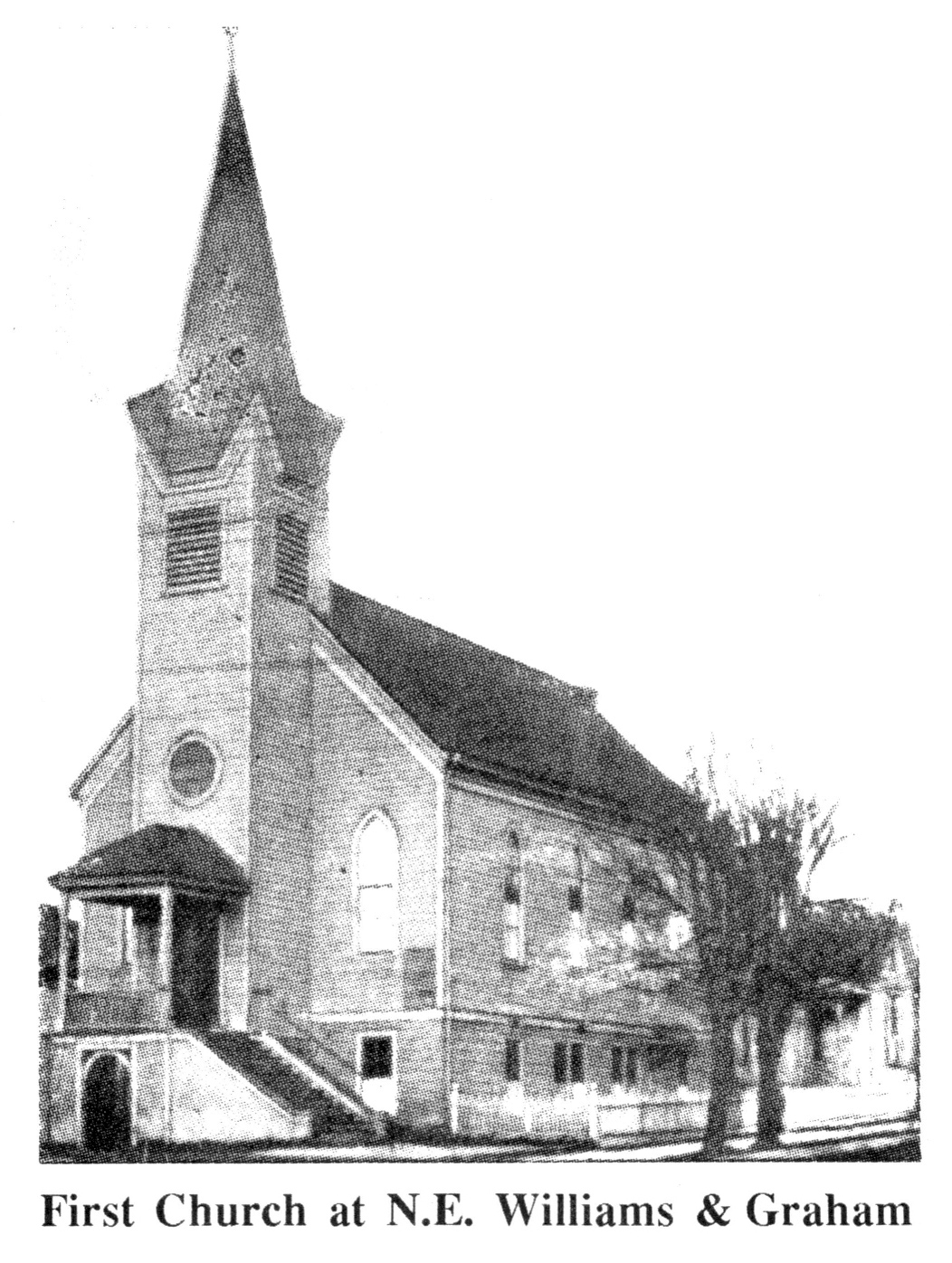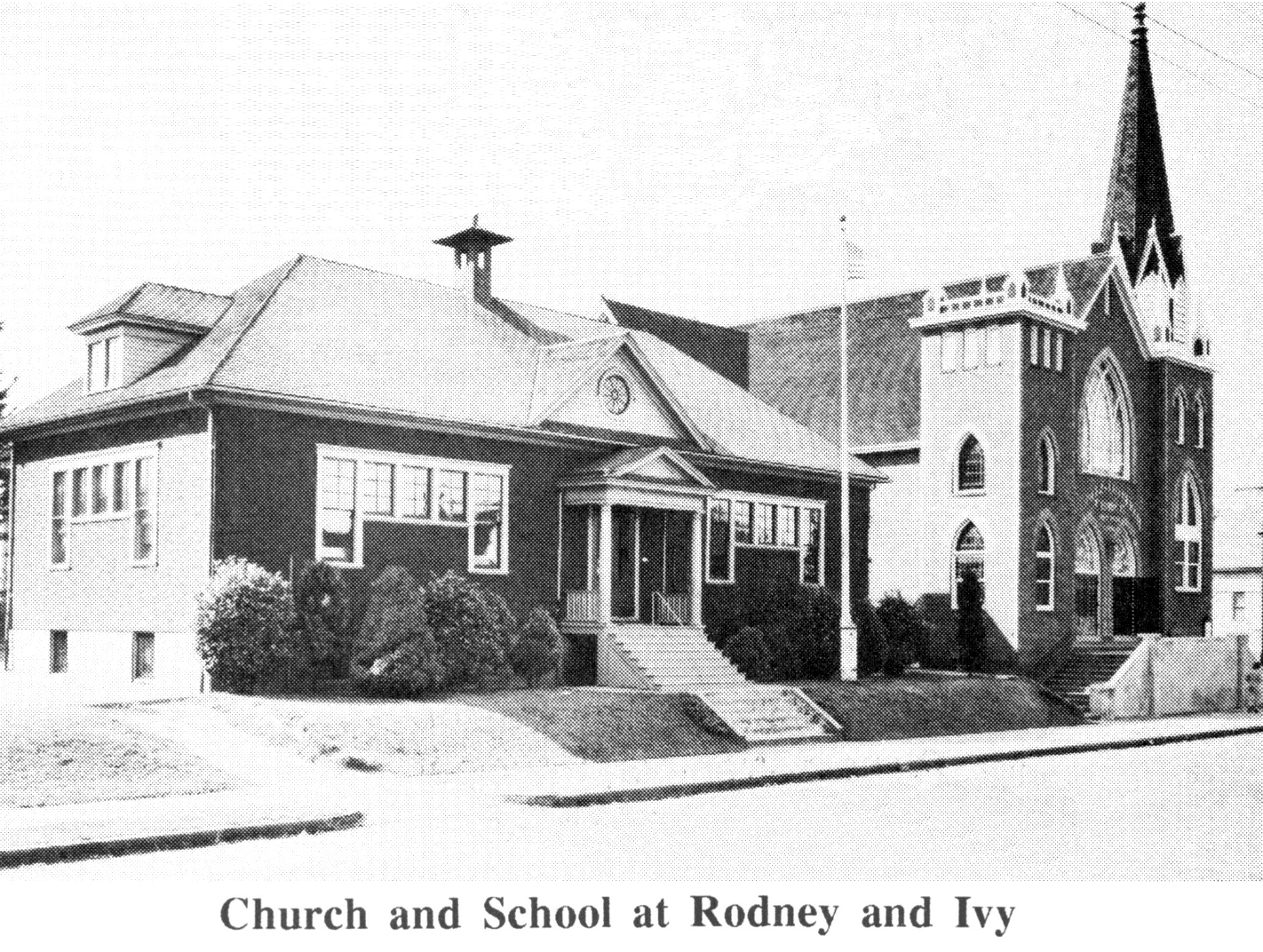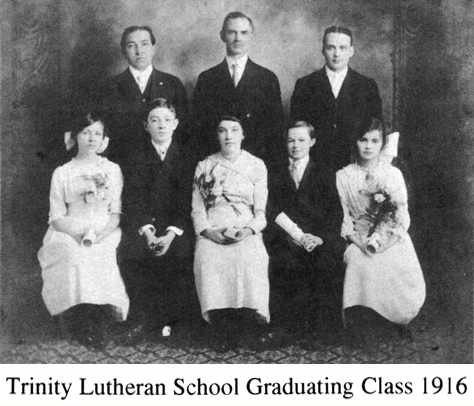The following history is excerpted from:
Trinity Evangelical Lutheran Church and School 100 Year History 1890-1990 by Don Sharadin
Birth of Concordia
The history of Concordia College (originally Concordia Academy) is intricately woven into the history of Trinity and as such deserves a niche in this chronicle.
At the July, 1903 convention of the Oregon-Washington District of the Missouri Synod, some twenty-nine pastors, teachers, and laymen had assembled at St. Peter’s Church near Cornelius, Oregon, to hear about the progress made by their church and the problems confronting it. One vital problem discussed at length was the difficulty in securing men to serve this vast wilderness area called by those in the East, the Oregon Country. Just barely past the frontier days, as civilization goes, with great sagebrush deserts in the east and limitless forested areas in the west this still appeared to be a region without a future. But the Mission Board of the youthful District saw otherwise and kept pressing Synod for more workers to take advantage of the many opportunities for the development of the church. Thus it was, at this convention that we first heard the now oft-repeated statement, “You must raise your own crop.” These were the words of a visitor at this session, Francis Pieper, the President of the Missouri Synod.
A number of problems remained to be overcome before classes could actually begin, but in one manner or another all were solved. Trinity Congregation offered the use of the church basement for a classroom, vacated when the new school was built at Rodney and Ivy two years previously. A member of the congregation, Adolf Kuempel, offered to build an addition to his house where the students could room and board. This house still stands, at 522 N.E. Morris Street.
The academy Board of Control, of which Mr. Kuhnau was a member for 26 years, had called a recent graduate, F.W.J. Sylwester, of Concordia Seminary, St. Louis, to serve as professor at a salary of $40 a month. The first music teacher was paid $10 for a whole year’s instruction of one class a week!
Dr. Sylwester, the school’s first professor and president for 41 years, was installed at Trinity Church on September 10, 1905, and seventeen students were at their desks. On December 20, 1907, after completion of a building at the present campus site, the students were able to move to their new home.
The property for Concordia Academy was part of a land grant to a William H. Payne on February 20. 1866. The 5 acre tract, part of the original 320 acre grant, was deeded to the Oregon and Washinton District of the German Evengelical Lutheran Synod of Missouri Ohio and Other States. May 31, 1907. The original owners were Charles Schnabel and his wife, Anne. Accepting the property for the District was Rev. W. H. Benrens, Trustee for the Oregon
and Washington District and the District President from 1906 to 1909. The Dedicators declared that the property “shall henceforth be known as Heidelberg.” Within a few years all of the area became know as Irvington Park.
The new building at the Concordia campus, serving as dormitory, cafeteria, offices and classrooms was intended to house the school on a temporary basis, one that stretched out to 40 years! It was finally replaced with a modern dormitory, Centennial Hall, in 1947, and an administration building, Luther Hall, was dedicated in 1948.
The District was the sole support of the school for the first six years, after which Synod paid the salaries of the professors. In 1923 it was offered to Synod, debt-free, and became a part of the Synod’s preparatory system. Dr. Sylwester served the school until the Lord called him home on October 26, 1972.

![1909-class-and-schoolbuilding[1]](https://trinityportland.org/wp-content/uploads/2013/07/1909-class-and-schoolbuilding1.jpg)

![His-6ground-breaking[1]](https://trinityportland.org/wp-content/uploads/2013/07/His-6ground-breaking1.jpg)
